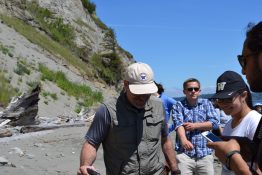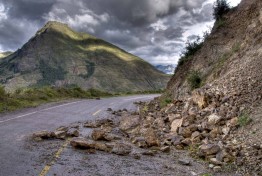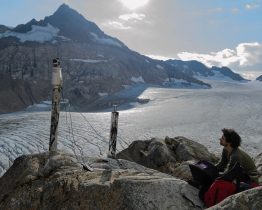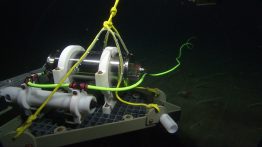Studying the Pacific Northwest's geology is an immersive experience for students taking UW's Introduction to Geology class.
Read more »50 simulations show how a 9.0 Cascadia earthquake could play out
We know the "really big one" is coming. But what exactly is going to happen in cities along the coast?
Read more at UW Today »Mountain glaciers shrinking across the West
Until recently, glaciers in the United States have been measured in two ways: placing stakes in the snow, as federal scientists have done each year since 1957 at South Cascade Glacier in Washington state; or tracking glacier area using photographs from airplanes and satellites. We now have a third, much more powerful tool. While he was a doctoral student in University of Washington’s Department of Earth and Space Sciences, David Shean devised new ways to use high-resolution satellite images to track elevation changes for massive ice sheets in Antarctica and Greenland.
Read more at UW Today »Hacking a pressure sensor to track gradual motion along marine faults
Deep below the ocean’s surface, shielded from satellite signals, the gradual movement of the seafloor — including along faults that can unleash deadly earthquakes and tsunamis — goes largely undetected. As a result, we know distressingly little about motion along the fault that lies just off the Pacific Northwest coast. University of Washington oceanographers are working with a local company to develop a simple new technique that could track seafloor movement in earthquake-prone coastal areas.
Read more at UW Today »Land-sea experiment will track earthquakes, volcanoes along Alaska Peninsula
The National Science Foundation is funding the largest marine seismic-monitoring effort yet along the Alaska Peninsula, a region with frequent and diverse earthquake and volcanic activity. Involving aircraft and ships, the new Alaska Amphibious Community Seismic Experiment will be led by Cornell University in Ithaca, New York, with partners at the University of Washington and seven other research institutions. “This effort will really change the information we have at our disposal for understanding the seismic properties of subduction zones,” said Emily Roland, a UW assistant professor of oceanography and one of nine principal investigators on the project.
Read more at UW Today »





